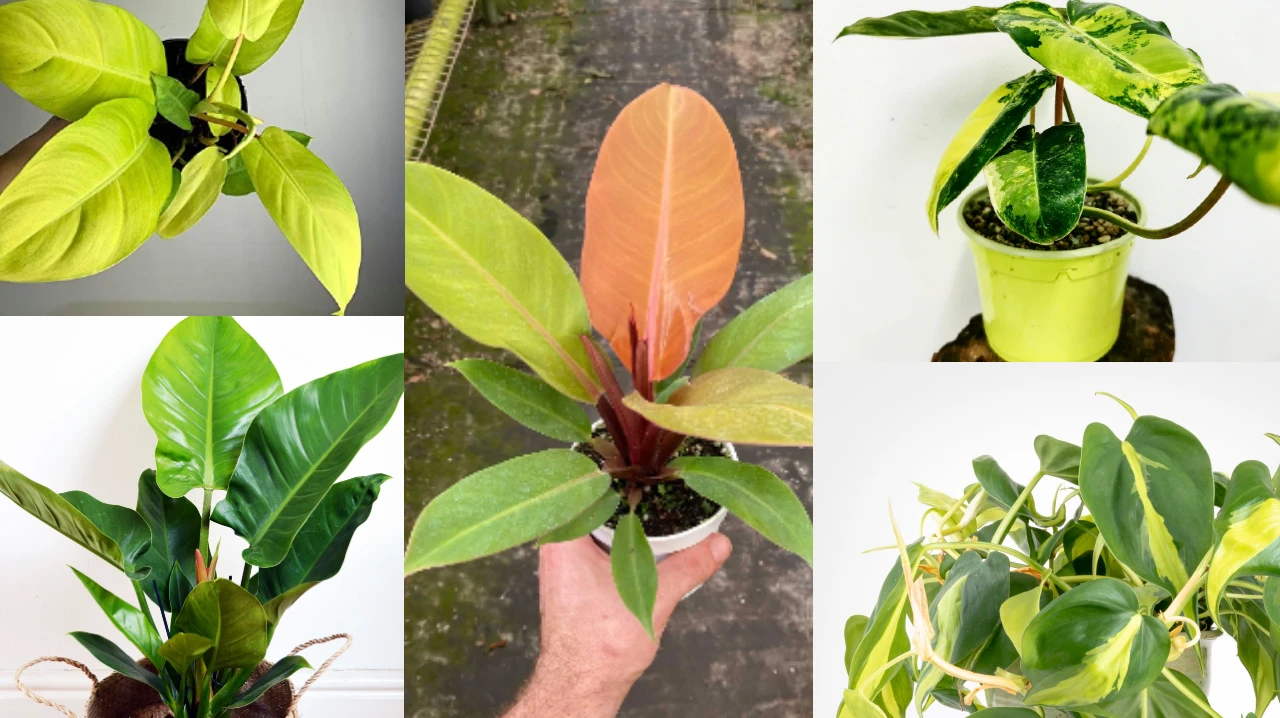With their large, glossy green leaves, various Philodendron types add a touch of the native tropical forest to your garden. If you’re looking for the best flowers to plant in spring in the different US states, the Philodendron genus could be one choice. With its hundreds of stunning species, the plant can create beautiful foliage in your garden. You can commonly grow it as a “houseplant” as many botanists tout it for its fantastic air-cleaning abilities indoors.
That is to say, Philodendrons are the easiest houseplant you grow anywhere. You may buy Philodendron Imperial Red as it is one of the best types of this plant. Whether you like trailing/ upright or climbing types, the gorgeous plant is perfectly happy in your home setting.
Don’t fret if you’re a beginner gardener, you can successfully grow these plants. We say this because Philodendron is, in general, a low-maintenance plant. They can stay in the same condition for a long period of time. Sure, you need to train them as trellis but they can also survive even if you leave them to grow with the help of their own device.
Typically, you can categorize Philodendron into two basic types:
- The vining plants
- The non-climbing plants
As the name suggests, the vining plant grows vines of many feet and requires a support structure to twist around and climb. Even a basket and trellis can work for this type. The non-climbing, on the other hand, has an upright growth habit. They make a beautiful foliage plant in a container.
Generally, Philodendrons grow at a fast rate. They are some of the best plants in the spring but you can start growing them throughout the year with success.
Interested in learning more about Philodendron types? Keep scrolling down.
Upright vs. Climbing
Note that the climbing type of Philodendron is the most common variety. The plants have a wonderful accent with their deep green color and heart-shaped leaves regardless of the home setting you have. You can train climbing varieties around the windows, containers, and up the poles.
However, the upright type of Philodendron tends to be larger-leaved with a compact habit. The variety, though, is a slow grower, may become large if cared for properly.
Philodendron Care – What You Need to Remember
Before we plunge into the details to find out the Philodendron types, let’s quickly understand some “must-know” features.
When caring for a plant genus like indoor Philodendron, you need to mimic the tropical and natural environment. If placed near a sunny window, the plant needs plenty of moisture and warmth. Philodendron, as a houseplant, tends to appreciate some outside time.
In the warm weather, the plant needs some natural light and fresh air. It is better to place the plants somewhere in a shady spot because facing direct sunlight may burn the leaves. You need to regularly dust the plants off with a wet cloth. It is to keep the leaves of the plant looking fresh and functioning at their best.
Moreover, if Philodendron vines get extra long, cut or trim them back. Summer or spring is the best time you can do this. You don’t have to worry about diseases with Philodendron. But they are often susceptible to some houseplant pests commonly present in the home. These may include scale, spider mites, mealybugs, and thrips.
Stunning Philodendron Types
You can get easily get rid of these pests with horticultural oil like Monterey LG 6299 or natural insecticidal soap such as Safer Brand 5118-6 Insect Killing Soap.
If Philodendron is your favorite plant, you’re not alone. This plant is the first choice of many people who love gardening and for all the right reasons that include;
- Robust growth
- Hardiness
- Ease of care
- An incredible diversity of leaf colors, sizes, growth habits, textures, and shapes
If you think “heartleaf variety” is the only type of Philodendron, get ready for a big surprise! Here we enlisted some of the most beautiful Philodendron types with pictures to help you choose the one that fits your taste the best.
Philodendron Varieties
Philodendron has more than 400 known species with tons of hybrids and cultivars. The climbing forms and an upright clumping are part of the unique “Aroid Fever” craze. There are some rare, newer, and more in-demand varieties of Philodendron that are not easy to track. However, there are many amazing cultivars and species that lucky gardeners find everywhere.
Philodendron Imperial Red
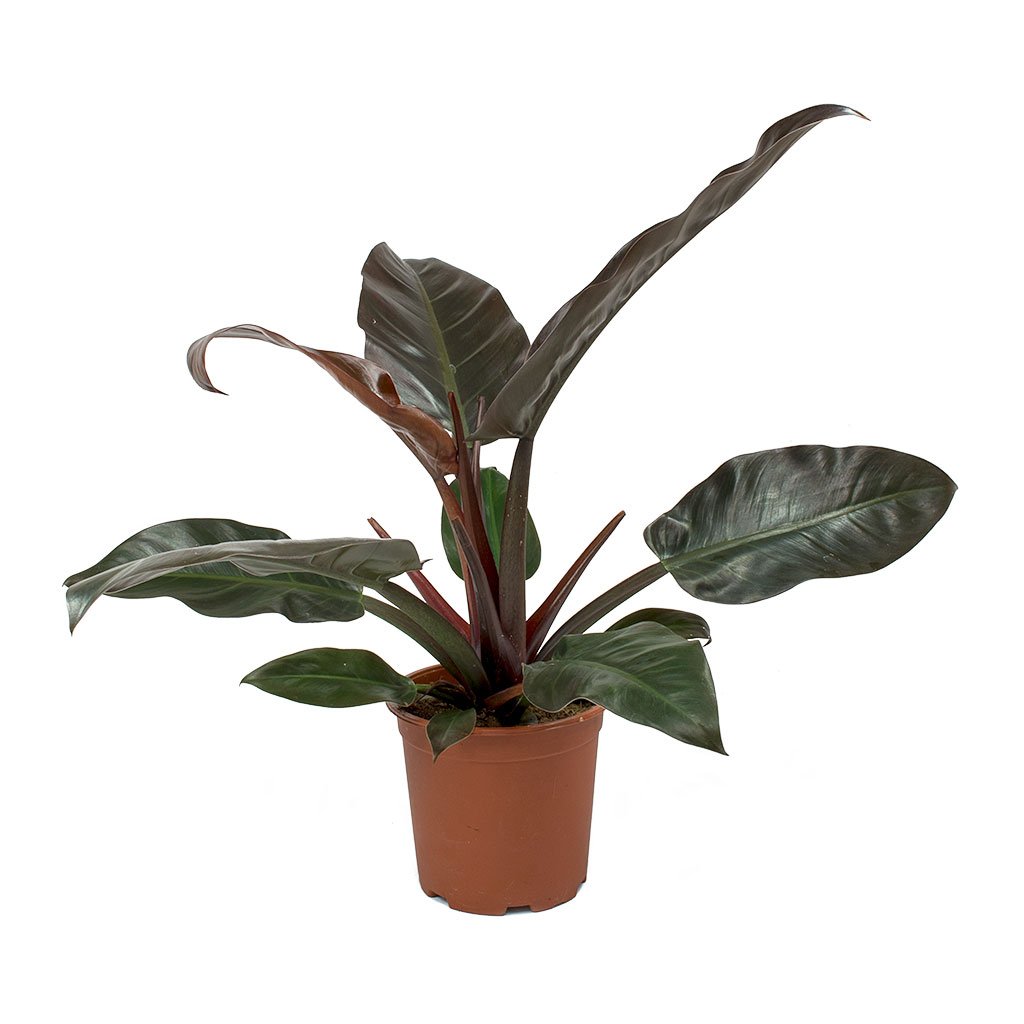
Also known as Pink Princess, it is the most gorgeous and adorable type of Philodendron. The most distinctive feature of this variety is its large coppery foliage. The leaves are either dark green or pink and show thick vegetation, depending on where you place them.
The features that make red leaf the best type of Philodendron include its decorative foliage, lush, large, leathery, and oval leaves.
When leaves are young, they are bright red. They turn into dark glossy green from burgundy red-purple when they start maturing to red.
Philodendron imperial red comes with a bushy and compact habit. As this type is a low maintenance variety and exceptionally shade tolerant, it is ideal for reaping air-purifying benefits. Many botanists call “red imperial” an air purifier as it can absorb harmful chemicals.
This Philodendron type is happy in shady areas but grows the best in bright (indirect) light. Direct exposure to the sun may scorch the thick leaves. Other than that, the care for imperial red is manageable for beginners.
Plus, it doesn’t grow wildly or aggressively and add body to empty gaps in any living space. The eye-catching color of leathery leaves adds interest to any spot you place the plant. The type can adapt to different water and lighting conditions. The large dark, green leaves of red imperial red enable them to the tiniest water and light traces.
Heartleaf Philodendron
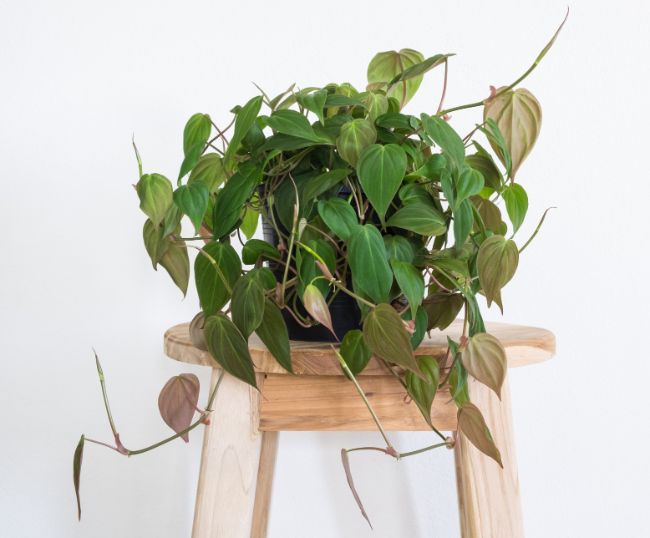
Philodendron Hederaceum or heartleaf Philodendron is another common and popular type of this plant. It has adorable trailing vines that can grace any hanging basket and windowsill in your home.
It is undeniably, the classic type for beginners with excellent adaptability to a variety of humidity or light conditions. Indeed, it is forgiving of your benign neglect (except overwatering).
The heartleaf’s heart-shaped leaves are fast-growing and two to four inches wide when you trail them. Once you allow the leaves to climb, they can grow to more than eight to nine inches wide.
If you have Juvenile form, it will grow into lighter bronze-toned leaves. If you’re looking for a beautiful hanging plant that has four to five inches long vines, heartleaf Philodendron is ideal for indoors. You can enjoy a fuller look by potting in multiple individual plants together.
Besides this, heartleaf Philodendron responds well to being trimmed if “bald” or “leggy” on top. It can propagate without any trouble. You may find heartleaf Philodendron with the names like Scandens, Cordatum, or Oxycardium. These are former names of the Heartleaf Philodendron as it has many attractive varieties.
Philodendron Lemon Lime
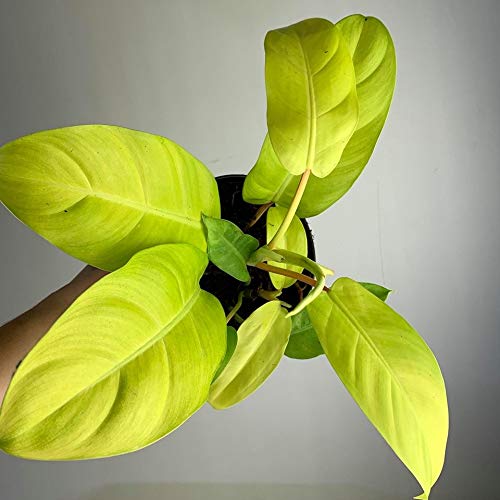
This yellow-green type is a cheerful cultivar of conventional heartleaf Philodendron. You might not have heard about it as it is less popular compared to others. The Philodendron type has some basic features of Heart-leaved Philodendron with eye-catching foliage.
Moreover, its lemon-lime hue is impressive and looks like a fountain of colorful foliage, cascading from a planted hanging pot. The beautiful generous type of Philodendron needs the same level of care as its classic cousin. It definitely deserves attention for your indoor plant collection.
Philodendron Imperial Green
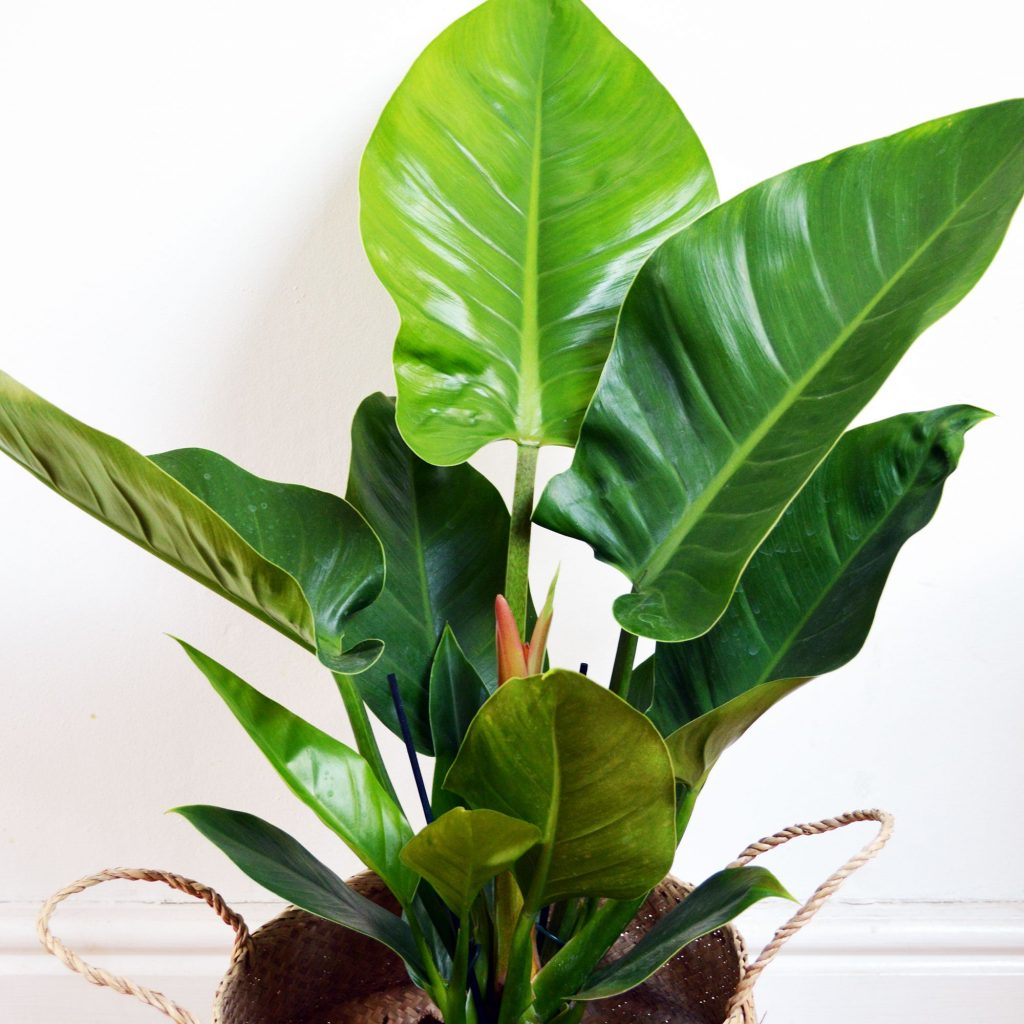
This vibrant green type is one of the spirited philodendrons. Its broad foliage and the bush-like plant have the tendency to grow in extensive and impressive dimensions. In fact, it develops beautiful close layering that creates a huge and grand centerpiece.
Moreover, this plant is happier with higher in- direct sunlight compared to other varieties. Though the plant type can grow, it is ideal to let Philodendron imperial green become a climbing shrub. It grows new leaves that emerge with a tangy and light green color that darkens with maturity. It has varying shades adding appeal when you mass together.
Interestingly, imperial green is available widely and has many different features than the ubiquitous Hederaceum. It is an excellent specimen if you’re a beginning collector.
Philodendron Prince of Orange

Looking for a fun or cute type of Philodendron? Here is what might make the right choice for your indoor collection. The leaves of this Philodendron type emerge orange and then turn into light green color when mature. The new leaves and petioles are deep and colorful.
The tangy “Prince Orange” is the upright Philodendrons. They produce a compact cluster of leaves wrapped around its stem. The plant type is generally tidy and doesn’t need any staking. If cared for well, it can grow into a high and wide spectacular plant statement. As it is hardy, it can thrive on regular or daily Philodendron care.
In addition to that, it is a sweet hybrid that has wide circulation. In fact, it is the most exotic-looking variety of Philodendron you can get for your indoor succulent collection.
Philodendron Brasil
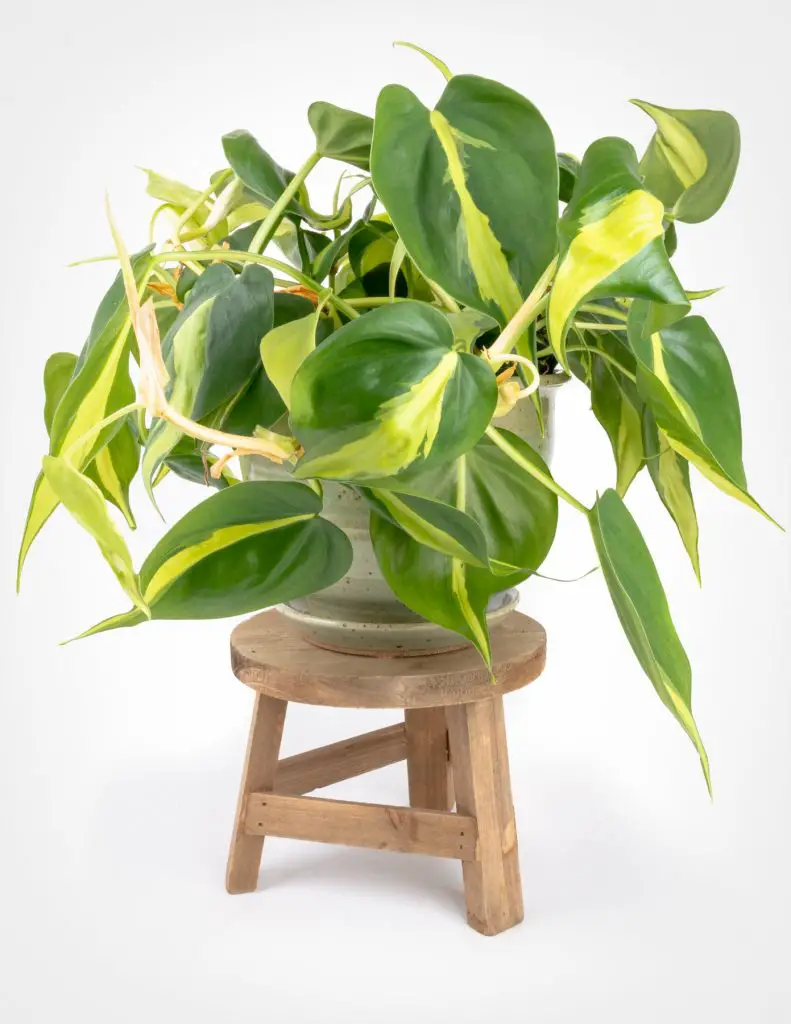
Philodendron Brasil is an overlooked cultivar due to its designer look. Though it looks fancy, it is very easy to maintain. You may find an array of hardy qualities of heart-leaf Philodendron. The plant type also adds impressive center strips that are lime green in color and have scattered yellow splotches across the leaves.
Brasil has good tolerance for medium light. However, it needs some brighter conditions compared to most Philodendrons to increase its beautiful variegation. When this plant receives low light, it reverts to all green. The vines of Brasil look excellent trailing from a basket in the bright spot. This type of Philodendron is not only easy to find but also inexpensive.
Philodendron ‘Burle Marx’

The vigorous favorite like “Philodendron Burle Marx” offer rugged elegance. It is because the plant can produce a bunch of paddle-shaped, elongated, shiny green leaves with lobes and deep foliage. This bunch undulates down gently and looks beautiful due to pale, delicate veining.
The upright growth style of Philodendron Burle Marx makes festive clumps of two to three ft high and wide. The Philodendron type is prolific and hardy as a landscaping groundcover in warm climates; it prospers on distinctive Philodendron treatment when you grow indoors.
It is a basic variety, thereby, it is easy to source and inexpensive. You may buy many prized variegated hybrids that include Burle-Marx Fantasy, which has mosaic patterns.
Philodendron Xanadu
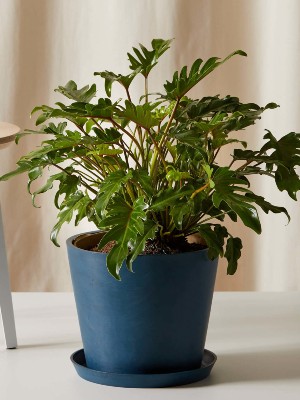
The upright-growing type of Philodendron is a crowd-pleaser. Botanists have recently reclassed it to a separate but similar to Thaumatophyllum genus. It retains the moniker of Philodendron as an official synonym. If you like collecting Philodendron, this type is not something to miss out on.
The plant has glossy, broad, leaves with multiple lobes that are 15 to 20 long and sturdy stems. The type of Philodendron is wider compared to tall plants. It also comes in a dwarf Golden color variety which grows only a few feet in height.
Furthermore, this versatile Xanadu can be your landscape groundcover during summers. It thrives indoors on medium bright but indirect light. The Xanadu, with its amazing features, checks almost all the classic features of Philodendron.
That means this type of Philodendron is hardy, easy to maintain, forgiving, and has excellent adaptability to a range of conditions. It can provide tropical interest and is inexpensive.
Philodendron Brandtianum

The Brandtianum has unique variegation that attracts attention with its olive-colored leaf. The magnetic pattern of silvery lines between the veins sets type of Philodendron apart from other types. Otherwise, the plant type has many common features with gorgeous vining heartleaf.
The popular Philodendron type is fast-growing in suitable conditions. The unique plant looks outstanding in both small and large hanging baskets. You may even keep it as a tabletop centerpiece with some support.
Besides, Philodendron Brandtianum is an ideal choice for spaces with dim lighting as it keeps the variegation in relatively low light.
Philodendron Moonlight
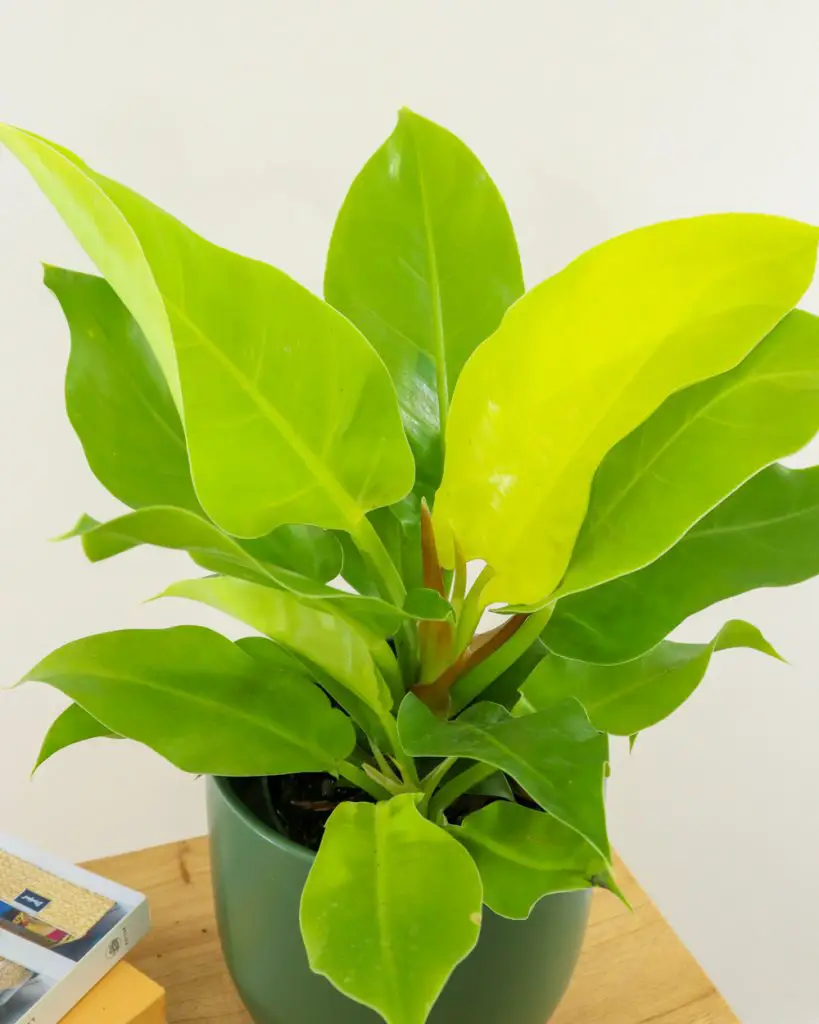
As interesting as its name, Philodendron Moonlight is a clump-forming type that stands out with its lime-green and electric leaves. Plus, there is no way you can ignore the pointed and broad foliage that can brighten up any bright spot of your home. Every new leaf unfurls a yellow, sunny color that gradually darkens with time. It also has red shades in the growing shoots.
If you want to keep the foliage of Philodendron Moonlight vibrantly fluorescent, keep it in bright indirect light. Also, try to dry the soil halfway before you start watering. Philodendron type is a fast-grower and usually doesn’t need any support. It develops a small shrub that is two feet high.
Philodendron Pedatum
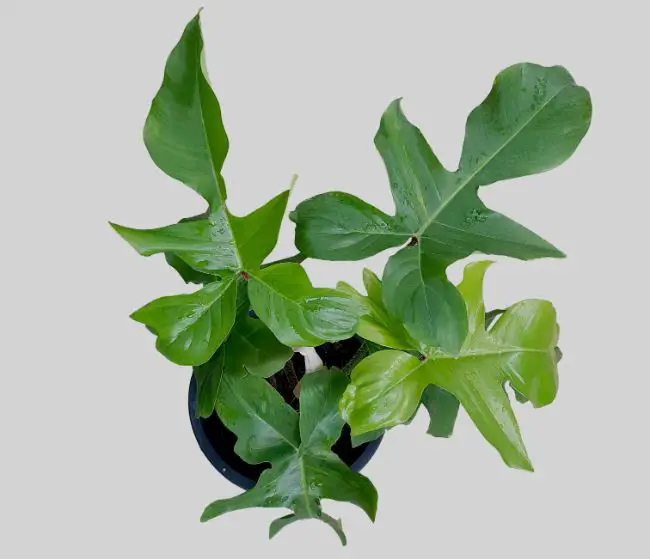
Commonly called “Oakleaf Philodendron”, this is an unusual type of climbing plant with prominent green leaves. The leaves change their color with maturity. They are oval and small when young, but develop some deep lobes with age. They can grow up to nine inches long.
Keep in mind that the Pedatum is included in the climber’s category and has an open and airy structure that grows well up to three feet tall. It is evergreen indoor and hardy and flourishes with regular Philodendron care.
You need to clean or trim its leaves periodically. It helps ward off insects and breathe the leaves. Plus, this is one way you can make the leaves of this Philodendron shine naturally. The leaves of this plant type have an interesting and intrigued shape with deep lobing.
Philodendron Micans
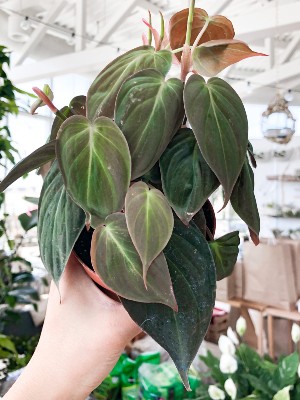
The handsome Philodendron looks beautiful with trailing vines of long heart-shaped leaves. The tiny hairs on the leaves give them an iridescent hue. The way its foliage hits the light and makes it different from other Philodendrons. The leaf’s color may range from light to dark green or bronze.
You can find reddish undersides and a unique velvety texture in the young leaves. However, the leaves become smoother as they age or mature. Also, Micans, with its bright foliage, makes exquisite hanging plants in a window (out of the direct sun).
The plant can grow quickly with regular Philodendron care. It can benefit from drying out between watering sessions. The vines are long and reach about six to seven feet. However, the only drawback you may face with this type is that it is hard to find.
Philodendron Bipennifolium
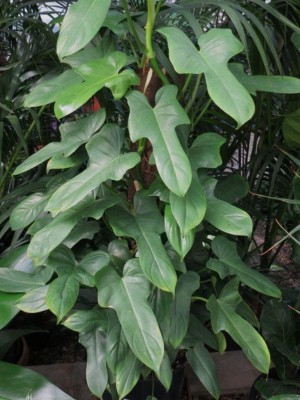
The larger climber looks distinct because of its trippy-looking leaves. They can grow over two feet long and take an attractive, horse-head appearance. It is one of the common Philodendron types that many people love for its leaf texture and shape.
The moderately fast-growing Philodendron looks best when staked from flopping. It grows relatively larger, so you need some more space. The leaves of this plant actively turn to the sunlight; therefore, you need to rotate its position periodically to keep the light exposure balanced.
It has plenty of color varieties that include the blue-gray Glaucous, bright yellow-hued Aurea, and some other variegated varieties. Green Dragon, for instance, is one mainly sought-after hybrid.
Philodendron Birkin
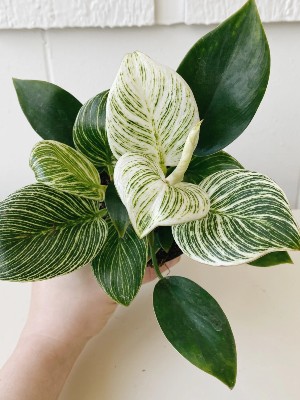
It is easier to see why this beautiful Philodendron has sparked Philodendron mania. It has pinstripe variegation with a dark green background and striking radial patterns. This natural variability is the reason why every leaf looks a bit different.
In fact, it is fun to find out how each leaf turns out. It wouldn’t be wrong to say that the plant is entertaining and can stand out in almost all settings.
Like Philodendron Brasil, Birkin may look like a designer diva to you, but, in reality, it is a low-maintenance plant. But, it is a compact plant that doesn’t grow fast and can reach not more than two feet high.
Philodendron Birkin is prone to root rot, so you need to make sure that you keep it in well-draining soil. The soil should dry halfway before you re-water it. The soil of the plant needs to be half wet.
Plus, it is important to keep in mind Birkin may have a spontaneous chimeric mutation. The condition puts out leaves with their aberrations. Many people propagate the plant widely via tissue culture and costs have also dropped.
Philodendron Hastatum
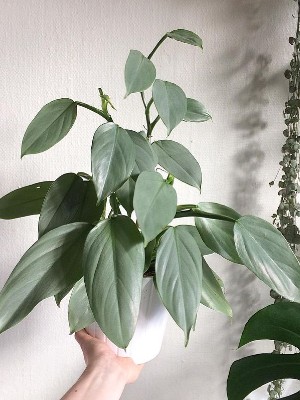
This bold Philodendron type has arrowhead-shaped long leaves. They can grow up to ten inches wide and two ft in length. However, the vines may reach over ten ft long. With its metallic and gray-green sheen, Hastatum can commandeer any dull space, whether indoors or outdoors. It can mix well with other varieties.
Though it is a rather thirsty Philodendron, it is also subject to problems like root rotting. You need to keep the pot snug. Plus, try using a terra cotta container to allow the plant to breathe.
You’d be surprised to know that the Philodendron type responds well when you pinch back the plant early in any season.
Incidentally, Hastatum is a rare Brazilian wild plant but it is an equally popular houseplant. That is why its existence is common and not threatened. Gardening has played a positive role in its preservation!
Philodendron Florida Ghost
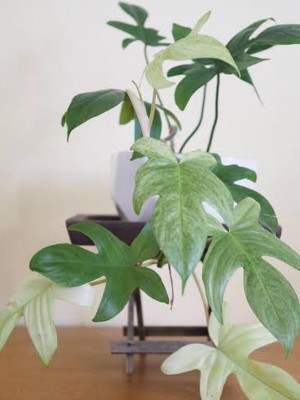
This is another type of Philodendron that has high demand due to its eye-catching appearance. It has highly variegated foliage ranging from a mottled green, hazy to a creamy white full-leaf. In fact, each specimen of Philodendron Florida Ghost is different.
Moreover, it is also interesting for shiny red and textured petiole. The plant type is typically a shape-shifter that changes not only its form but also its color as it ages. It develops oval and irregular young leaves and a set of “arms” that mature in the deep cut lobes. The Florida Ghost needs stronger sunlight compared to other Philodendrons to grow its variegation.
People often buy it as a separate variety known as Florida ‘Mint’ Ghost. It is a regular grown Ghost in low light.
Summing Up
All in all, Philodendron is an easy to grow and decorative plant with some wonderful varieties. While all the types or varieties of Philodendron are excellent, Philodendron Imperial Red is the best choice. It is very popular among plant growers due to its unique types, texture, and colors. It has amazing pollutant absorbing qualities that make it stand out.
We highly recommend purchasing this indoor plant type as it is low maintenance and looks exceptionally beautiful in any corner of your home.
We recommend products from companies like Amazon, which we also get a small commission from, to keep this website running. However, we want to stress that all of the products we recommend are tested, used by us, and 100% unbiased and true.

